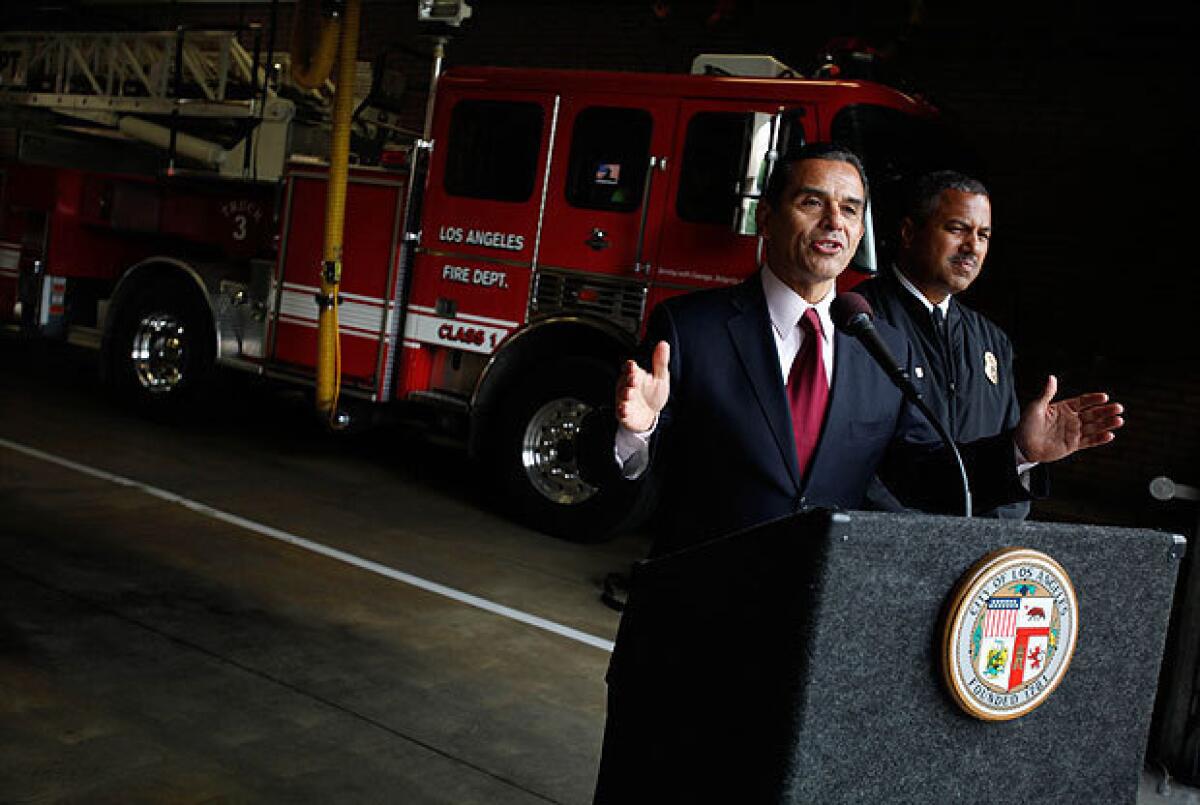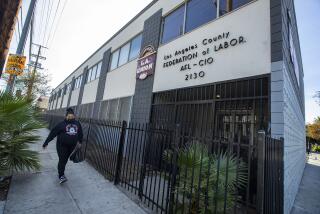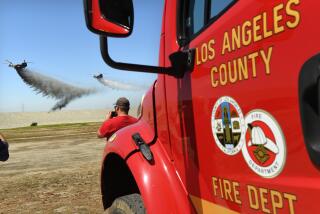Villaraigosa says city attorney’s office gave fire agency bad advice

In a new escalation of the controversy over Los Angeles Fire Department response times, Mayor Antonio Villaraigosa’s top lawyer accused the city attorney’s office Thursday of improperly advising fire officials to keep some performance data secret.
Brian Currey, the mayor’s chief counsel, accused City Atty. Carmen Trutanich’s office of blocking the release of detailed data showing how quickly firefighters arrive at emergencies. Among other things, Currey complained that the city’s lawyers warned fire officials that they could face criminal charges for disclosing information that has been routinely distributed in the past, including the locations of emergencies.
In a letter to William Carter, Trutanich’s chief deputy, Currey said the city attorney’s advice put the Fire Department in an “untenable position” and made the public hostage to uncertainty about the reliability of emergency services. In an unusual step, he encouraged outside parties — including the Los Angeles Times — to sue to gain access to information being denied by the department.
Carter dismissed the legal analysis offered by the mayor’s staff as an amateurish effort.
“That’s why the city attorney is the lawyer for the mayor, so we don’t have staffers trying to interpret the law,” Carter said. He said the letter “is factually and legally inaccurate and misleading” and cites references to a federal law that was updated two years ago. Carter declined to say what advice Trutanich’s office has given the Fire Department, citing attorney-client confidentiality.
At issue are clashing interpretations of how federal medical privacy laws and state open government statutes affect the release of detailed emergency response information. The debate comes at a turbulent time for the Fire Department, which has been socked with budget cuts in recent years and which is facing intense scrutiny over its emergency responses.
Last month, The Times disclosed that for years fire officials provided the public and lawmakers with data that made it appear as though the department was getting to people in crisis faster than it actually was. Revised numbers show that response times were well below widely used national standards.
Fire Chief Brian Cummings subsequently announced that basic details about medical emergencies, including incident addresses, would no longer be released. That broke with a longtime policy of releasing such information publicly, often via the department’s popular Twitter account. Cummings cited a 1996 U.S. law that deals with medical privacy — the Health Insurance Portability and Accountability Act, or HIPAA — as well as a preliminary opinion by the city attorney.
Villaraigosa quickly ordered Cummings to resume the earlier practice, saying the department “needs more transparency, not less.” But the agency, citing its attorney’s advice, has continued to withhold some data, including from The Times.
Karlene Goller, the newspaper’s deputy general counsel, said the federal law “does not prevent the Fire Department from continuing to provide basic information that The Times has requested,” including information about the location of an emergency and how long it took for first responders to get there.
“The public needs to know,” she said. She said HIPAA does not prevent disclosure of information that law — in this case the California Public Records Act — requires be disclosed.
At the same time that the department has withheld detailed incident data from the media, some of which could be used to compare response times in different parts of the city, it has resumed releasing similar information on individual emergencies to more than 18,000 followers on its Twitter account.
This week, for example, the agency tweeted about a man believed to be suffering from burns and smoke inhalation in a suspected garage fire on Sunburst Street in Arleta. The department later provided an update on that fire, noting that a woman was possibly “dead at scene.”
Reached Thursday afternoon, Cummings, who is in Massachusetts for a training program, said he hadn’t had a chance to read the letter from the mayor’s lawyer. He said he needed to check with the city attorney’s office before deciding how to proceed. But he said his goal is to be as transparent as possible. “I want you folks to know everything that is going on,” he said.
Carter said that the city attorney’s office provides legal advice and recommendations to clients such as the Fire Department, but that the agencies “decide whether to follow our recommendations or not.” And he said Villaraigosa, not the city attorney, “is in control of and responsible for the effectiveness of the Fire Department and the safety of the residents it serves.”
The mayor last month called for an audit of the department’s response times to reassure the public. City Controller Wendy Greuel, who is conducting the review, sent a letter to fire officials Wednesday complaining that her auditors had not received all of the information they requested.
The missing information includes department policies and procedures, as well as an explanation of how the department codes its data, Greuel spokeswoman Shannon Murphy said. Some of the response time data has been coded in a way that “doesn’t work for our analysis,” Murphy said.
Murphy also said auditors still “need to ensure the integrity of the data given all the questions surrounding their response times.”
Document: Mayoral aide’s letter to the city attorney
Document: Controller’s letter to LAFD
Full coverage: LAFD data controversy
More to Read
Sign up for Essential California
The most important California stories and recommendations in your inbox every morning.
You may occasionally receive promotional content from the Los Angeles Times.













